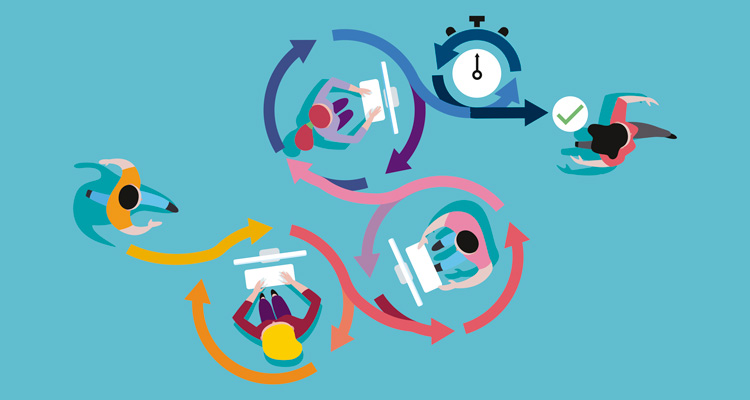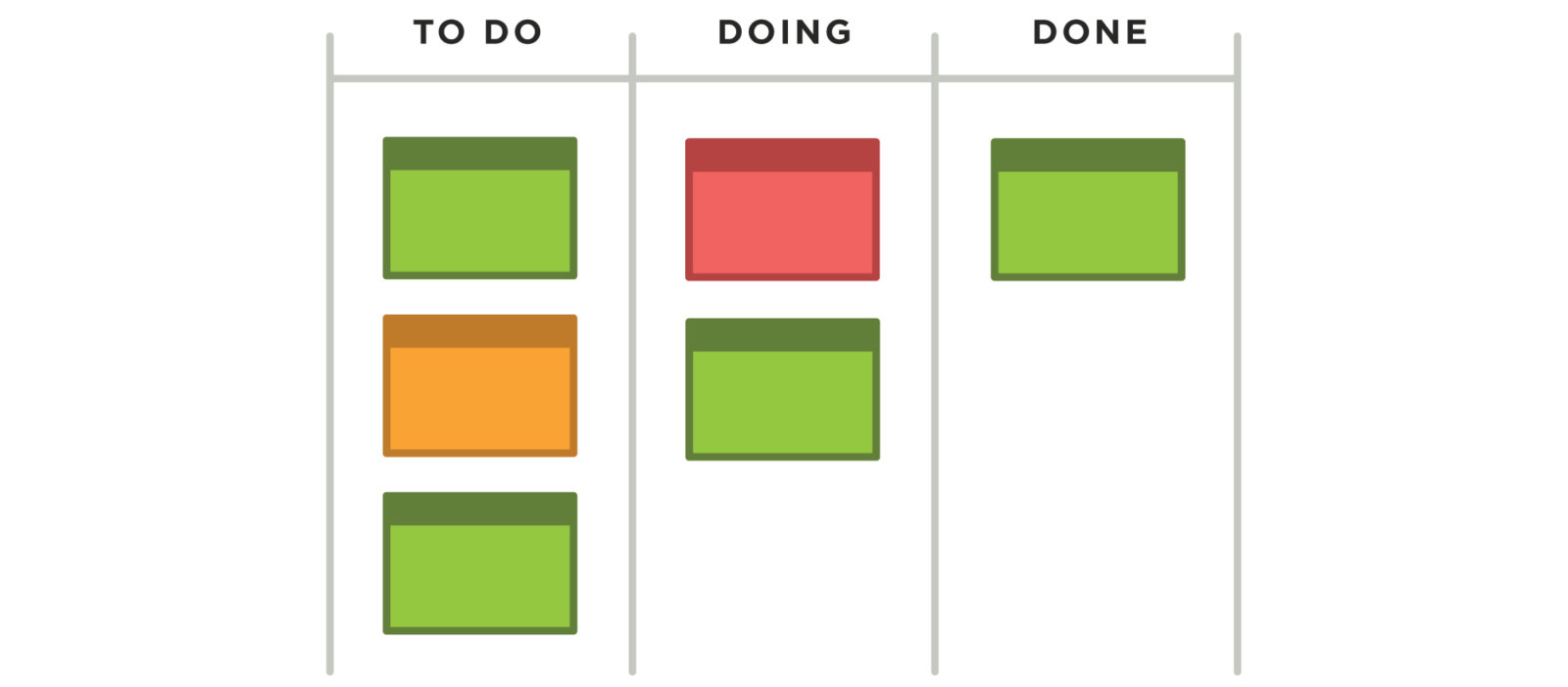
Many engineering and manufacturing companies choose Planview AgilePlace to help them to gain visibility into and manage their work. We are increasingly impressed with both the diversity and utility these organizations are getting from their Planview AgilePlace boards. With this post, we’d like to share some of the more interesting examples, in the hope that it may inspire better processes and lead to some creative new ways for engineering teams to pursue continuous improvement.
AEROSPACE PRODUCIBILITY BOARD
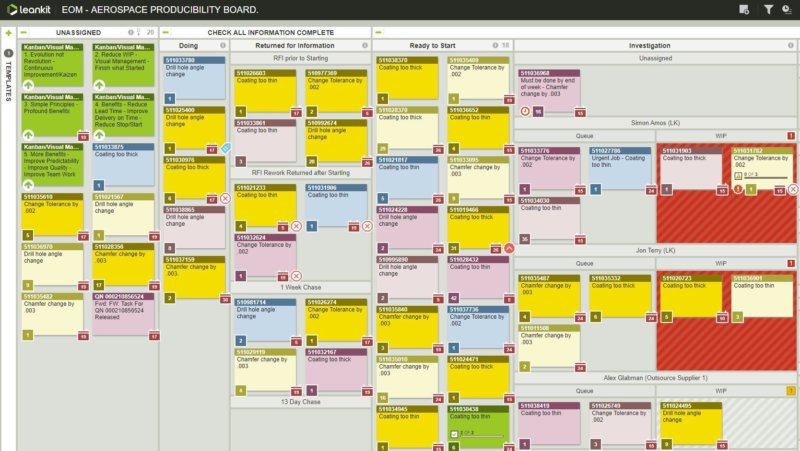
This aerospace producibility board is used to manage non-conformance and other day-to-day tasks. Supervisors can instantly spot issues for prioritization and escalation. Because of automated card history tracking, Planview AgilePlace users are ensured of an audit trail for any issue being dealt with, making handovers and collaboration that much easier – especially in a 24×7 production environment. Comments, colour coding and custom icons visually convey the current state of business, as it happens, which reduces the need for lengthy status meetings.
FACILITY AND PRODUCTION ISSUES IMPROVEMENT BOARD
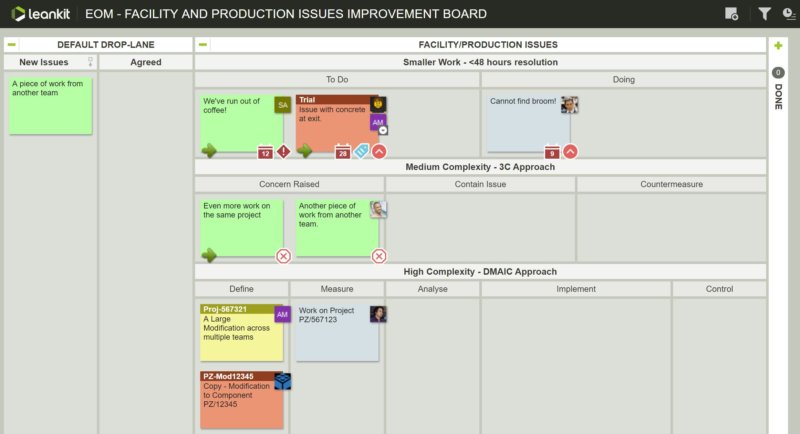
This board is used to manage day-to-day facility issues, as work is progressed according to complexity and urgency. Work can be prioritized in various ways, from a simple“do it now” for critical items, or a more formulaic 3C process (Concern, Contain, Countermeasure), all the way to a in-depth DMAIC (Six Sigma) problem-solving approach. The real-time and online nature of this board means that issues are being dealt with much more expeditiously, and reduces time wasted in meetings significantly.
SUPPLIER SCOREBOARD
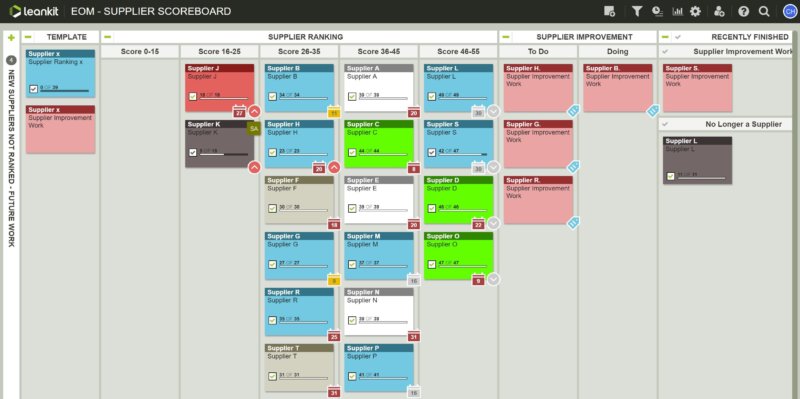
This is an example of a Planview AgilePlace board being used in a non-workflow application. The cards still move through the board, according to a Supplier Ranking, which is audited and scored against contractual criteria such as providing on-time, on specification goods or services. Connected child cards are associated with a supplier’s obligations, and progress on these cards automatically provides a visual representation of fulfillment and execution on the parent card. This board provides an at-a-glance view of supplier’s ability to deliver consistently against expectation.
AUTOMOTIVE NEW PRODUCT INTRODUCTION PROGRAMME-LEVEL BOARD
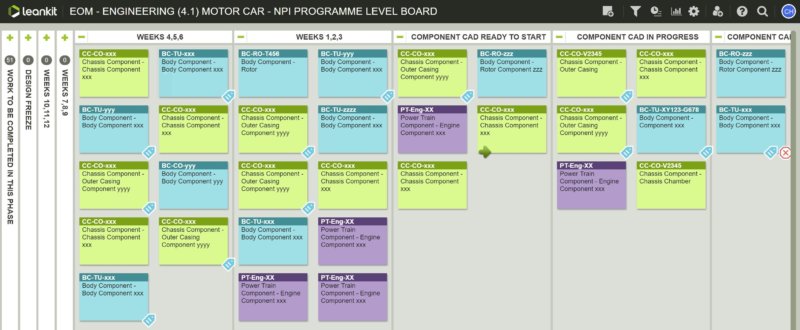
Here, we have a vehicle New Product Introduction (NPI) programme-level board, which acts as a high-level instrument for managing the NPI process associated with a new vehicle delivery initiative. The target audience is typically director-level and up, and the board provides insight into the status of component-level plan vs actual progress towards key milestones. Using this board ensures that consistent process and quality measures are applied throughout the programme, while expedited work or risk mitigation plans are easily highlighted, enabling teams to swarm around these issues and get them resolved much more efficiently.
SAFE PORTFOLIO BOARD
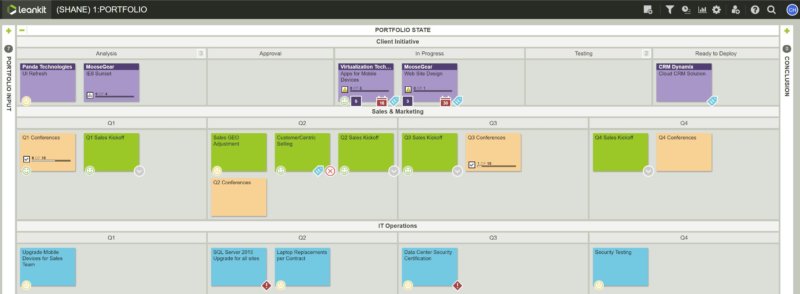
With adoption of the Scaled Agile Framework for Enterprise (SAFe) on the increase within the engineering and manufacturing community, we thought we’d share 4 boards that make up a typical board hierarchy used in a manufacturing context. Starting at the top, here we have the SAFe Portfolio level board, which is used mainly to visualize the status of key portfolio initiatives and projects. Note how this board combines a bird’s-eye view of lanes that hold Client Initiatives, Sales & Marketing work, as well as IT projects. This board not only bridges the gaps in alignment that often exist at this high level across an organization’s value stream, but also provides a central place for work status to be visualised, even when the underlying business processes are very different.
SAFE VALUE STREAM
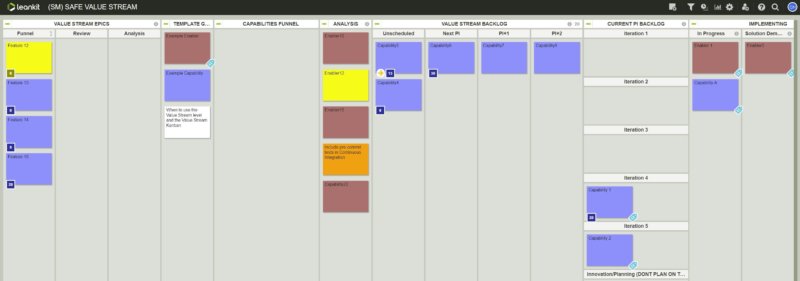
This board is number two in our 4-board SAFe board hierarchy, and one level down from the portfolio board (above). At this level, the Value Stream Kanban board is used to track the epics, enablers and capabilities associated with the value stream, through a defined process which revolves around maintaining a backlog, doing analysis, and going into implementation and possible delivery. This board is great for value-based prioritisation activities. Also worth noting is that cards on this board are almost always associated with parent cards higher up in the board hierarchy (typically the SAFe Portfolio), as well as being broken out into child cards representing the work taking place lower in the SAFe hierarchy (typically the ART).
SAFE SINGLE AGILE RELEASE TRAIN (ART)
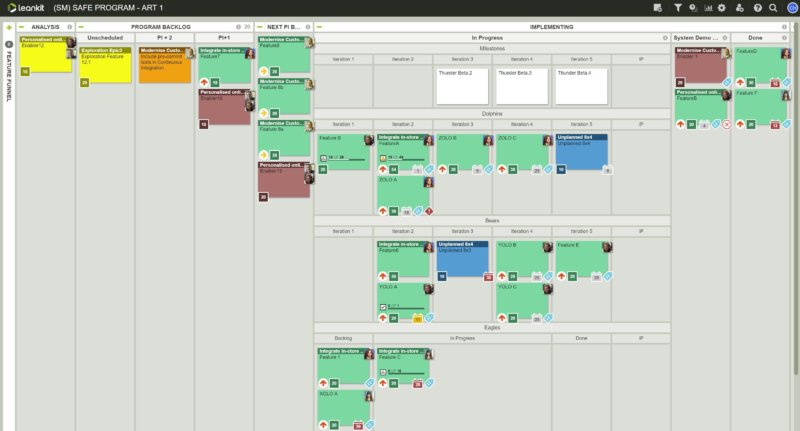
Board #3 in our SAFe hierarchy, here we have a single agile release train (ART) example. Boards like these are used to coordinate the efforts of multiple teams against the prioritised features and enablers assigned to them. This board ensures everyone is working towards the same milestone, because team members are able to visualize the dependencies between their work and the inputs/outputs from other teams simultaneously. This enables the synchronization of deliverables in a collaborative and transparent way. In addition, multiple iterations for the current Program Increment (PI) are being tracked, and teams have the flexibility of using different processes in tandem, without getting out-of-sync with each other.
MULTIPLE AGILE RELEASE TRAIN (ART) BOARD
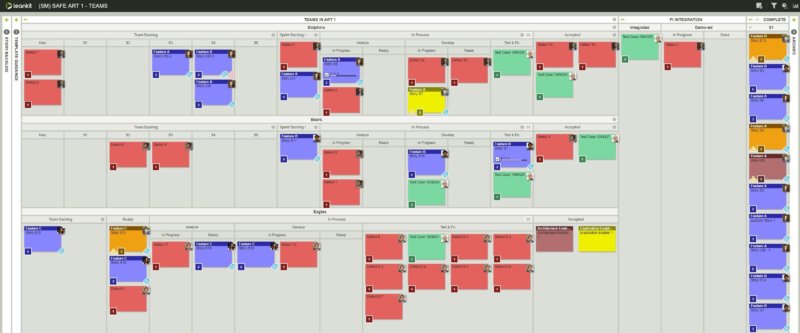
The final board in our SAFe coverage is an alternative to the single ART example (above). Here, we have multiple teams or business units, coordinating their work as they collectively take responsibility for reaching the key Program Increment (PI) integration milestone. Examples of the kind of work being managed here includes Defects, Stories and Test Cases. As always, teams have the flexibility to define their own Sprint/iteration process, while co-existing peacefully alongside other teams who work using a different approach, whilst retaining overall sight of the end goal.
IN CONCLUSION
Engineering and manufacturing organizations are getting value from adopting Kanban visualization because it simplifies the coordination of work across teams and drastically improves the alignment of goals between business units. While intuitive to use on the front-end and flexible enough to adapt to any knowledge work process, Planview AgilePlace is still taking care of the hard metrics in the background. This enables engineering organizations to track key performance metrics with precision, such as cycle times, burn down, and work distribution. These are not just leading indicators of performance, but they also help identify opportunities for continuous improvement.
Planview AgilePlace offers pre-built Kanban board templates for SAFe 4.0, making it easy for teams to jump in and get started immediately. We hope the above examples stimulate some creative ideas to advance your pursuit of continuous improvement.


